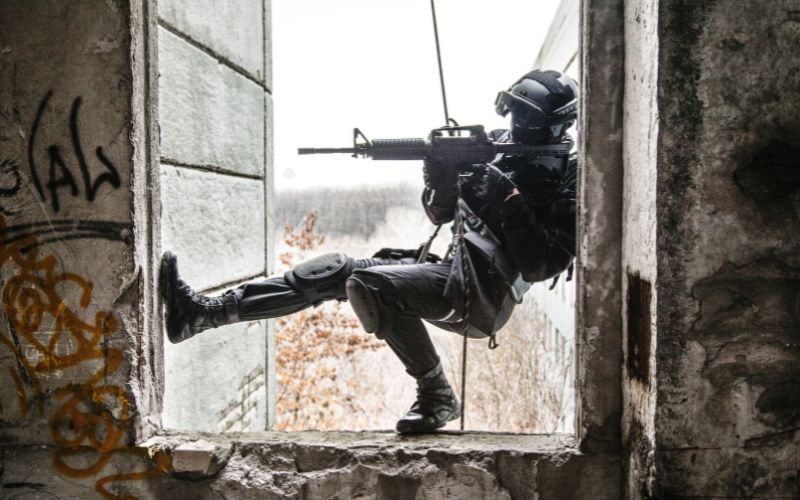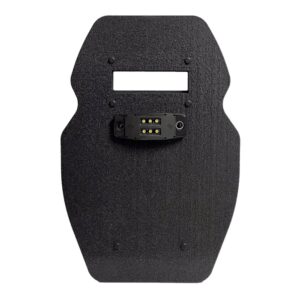How Technology Is Shaping The Future Of Tactical Gear

The evolution of tactical gear has been closely intertwined with advances in military technology. Over the centuries, from ancient armor to the modern ballistic vest, tactical gear has continuously developed to meet the demands of changing battlefields. Today, technology is accelerating these advancements at an unprecedented pace. Military forces, law enforcement agencies, and even outdoor enthusiasts benefit from innovations in materials, electronics, and data systems that push the boundaries of what tactical gear can do. As we look to the future, it’s clear that technology will continue redefining tactical gear to increase effectiveness, safety, and adaptability.
In today’s blog, we will explore how emerging technologies are shaping the future of tactical gear, examining key trends and developments transforming this critical field.
1. Smart Fabrics And Wearable Electronics

One of the most significant technological advancements in tactical gear comes from the rise of smart fabrics and wearable electronics. These modern military gear are fundamentally changing the materials used in tactical clothing, creating garments that can monitor vital signs, regulate temperature, and even protect wearers from hazardous environments.
Smart Fabrics are engineered with embedded sensors and conductive materials that allow them to interact with the wearer and the environment. For instance, advanced uniforms can track a soldier’s heart rate, body temperature, and hydration levels in real-time, transmitting this data back to command centers for health monitoring. This capability not only keeps soldiers safer but can also help them make strategic decisions based on the troops’ real-time conditions.
Furthermore, wearable electronics, like integrated GPS systems, communication devices, and heads-up displays (HUDs), are becoming increasingly compact and rugged, blending seamlessly into tactical gear. This minimizes the need for bulky external devices and allows for greater mobility and stealth in the field. For law enforcement or military operations, real-time communication, location tracking, and biometric monitoring are crucial for enhancing coordination and response times.
2. Advanced Materials For Ballistic Protection
Tactical gear is heavily focused on protection, and the future looks even more promising with advances in materials science. Traditionally, materials like Kevlar have been the gold standard for ballistic protection, but innovations are pushing the limits of what can be achieved.
Graphene, for instance, is emerging as a game-changer. It’s known for being incredibly lightweight yet stronger than steel, making it ideal for ballistic vests, helmets, and body armor. This enhances the protection level and reduces the weight of the gear, allowing soldiers and law enforcement personnel to move more freely and without the fatigue caused by traditional heavier body armor.
Another development is using liquid body armor, which hardens upon impact. This technology provides flexibility during normal wear but instantly stiffens when subjected to a force, such as a bullet or shrapnel impact. This innovation offers a perfect balance of comfort and safety, allowing users to be better protected while retaining a full range of motion.
3. Integrated Augmented Reality (AR) Systems
Augmented Reality (AR) is poised to revolutionize tactical operations by providing real-time data overlays in the field. Through AR-enabled goggles or visors, soldiers and law enforcement personnel can access crucial information without diverting their attention from the mission.
These systems can display maps, identify targets, highlight dangers, and even show teammates’ locations. AR can significantly enhance situational awareness in combat scenarios by providing real-time intelligence in the soldier’s line of sight. This kind of augmented perception reduces the cognitive load on personnel and allows them to focus on what matters most in high-stress environments.
In the future, AR could also integrate with other technologies, like drones and robotics, to provide even more comprehensive data. Imagine a soldier seeing the feed from a drone overhead, getting a birds-eye view of the battlefield while simultaneously scanning for threats on the ground.
4. Exoskeletons And Enhanced Mobility
Exoskeleton technology, once the stuff of science fiction, is becoming a reality, and its impact on tactical gear is profound. Exoskeletons are wearable devices that enhance human strength and endurance using mechanical systems to support movement. This can significantly improve personnel mobility and effectiveness in military and law enforcement contexts.
For instance, soldiers equipped with exoskeletons can carry heavier loads without experiencing fatigue, allowing them to operate in the field for longer durations. Exoskeletons can also reduce the risk of injury, particularly in high-stress or different threat levels. In the future, these systems may also integrate with smart fabrics and AR technologies to create a fully interconnected suit of armor that enhances physical capabilities and provides real-time data and protection.
Exoskeletons are also being tested for medical applications, such as aiding in rehabilitating injured soldiers by providing support during physical therapy. This dual-purpose technology improves combat effectiveness and offers benefits in post-combat recovery.
5. Drone Integration In Tactical Gear
Drones have become indispensable in modern warfare and surveillance, but their role extends beyond reconnaissance. Today’s drones are smaller, smarter, and more versatile, and they are being integrated directly into tactical gear kits.
Micro-drones, for example, can be deployed by individual soldiers or law enforcement officers to scout buildings, survey terrain, or locate threats. These drones can send real-time video feeds to the operator, allowing for safer and more effective decision-making. Some drones can even be equipped with thermal imaging, allowing personnel to see in the dark or through smoke.
In addition to surveillance, drones can be used for resupply missions in difficult terrain, delivering ammunition medical supplies, or even performing search and rescue operations.
6. Energy Solutions And Power Management
With the increase in wearable electronics, smart fabrics, and other tech-based gear, managing power consumption has become a crucial challenge. The future of tactical gear will rely heavily on innovative energy solutions to ensure that these technologies are effective and sustainable.
Energy-harvesting technology is one promising solution. This involves the development of systems that can capture energy from the soldier’s movement or the environment to power devices. For example, kinetic energy harvesters could convert the motion of walking or running into electricity, which could then be used to charge batteries in wearable devices or communications equipment.
Additionally, improved battery technology is extending the operational lifespan of tactical gear. Lightweight, long-lasting batteries that can withstand extreme conditions are essential for keeping devices like GPS units, HUDs, and smart fabrics operational during prolonged missions.
7. AI And Data-Driven Decision Making
Artificial Intelligence (AI) is becoming a cornerstone in modern military strategy, and its impact on tactical gear is inevitable. AI-powered systems are being developed to process vast amounts of data in real-time, providing valuable insights that enhance decision-making on the battlefield.
AI could assist in everything from target identification to logistical planning in tactical gear. For example, AI-driven helmets could identify potential threats by analyzing environmental data and comparing it to known enemy behavior patterns. Similarly, smart tactical gear could monitor the wearer’s biometrics and alert commanders if a soldier is injured or tired, ensuring rapid medical response.
AI could also streamline the supply chain for tactical gear, optimizing the distribution and maintenance of equipment to ensure that soldiers and law enforcement personnel are always equipped with the latest and most effective tactical tools.
8. Robotics And Autonomous Systems

Robotic systems are increasingly becoming an extension of tactical operations. Whether through autonomous vehicles, robotic mules for carrying heavy tactical loadouts, or robotic surveillance systems, the integration of robotics in tactical gear is on the rise.
In the future, robotic systems could work alongside soldiers, taking on dangerous tasks like bomb disposal or hazardous reconnaissance missions. These robots could also serve as support systems, carrying additional gear and weapons or providing cover in combat situations.
9. Cybersecurity And Tactical Gear
As the integration of digital systems into tactical gear increases, the importance of robust cybersecurity measures becomes more pronounced. Modern tactical devices often connect to a network, making them vulnerable to cyberattacks. As a result, future tactical systems will include built-in cybersecurity features, ensuring secure communication and data integrity in the field. This emphasis on cybersecurity is crucial for all users of tactical gear to be aware of and prepared for potential threats.
In an age of information warfare, it is critical to ensure that adversaries cannot hack or compromise tactical systems. Cybersecurity will protect tactical units, from communication devices to drones, from digital interference or sabotage.
Conclusion
Rapid technological advancements in materials, AI, wearable technology, and unmanned systems are driving the evolution of tactical gear. These innovations are making tactical gear smarter, more adaptable, and more protective, giving military personnel, law enforcement, and first responders the tools they need to perform their duties with greater efficiency and safety.
As technology advances, the future of tactical gear promises even greater integration, customization, and functionality. This ongoing evolution ensures that those on the frontlines are better equipped to face the challenges of tomorrow, sparking hope and excitement about the possibilities that future advancements in tactical gear will bring.
Frequently Asked Questions
How Advanced Will Technology Become In The Future?
Experts predict that future advancements, particularly with the development of 6G networks, will bring about transformative technologies like tactile internet, holographic communication, and machine-type communication. These innovations will significantly expand internet capabilities and revolutionize our interactions with digital environments.
What Is The Most Cutting-Edge Military Technology?
One of the most cutting-edge technologies in the military today is Artificial Intelligence (AI). Its application enhances decision-making processes in intelligence gathering, surveillance, and reconnaissance. AI also powers autonomous weapon systems, improves equipment safety, and reduces risks to soldiers during combat.


